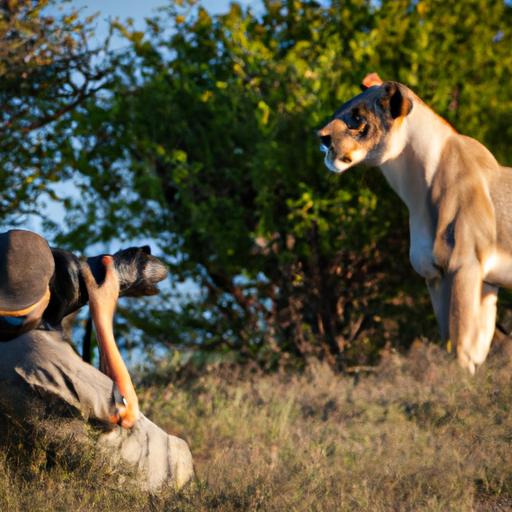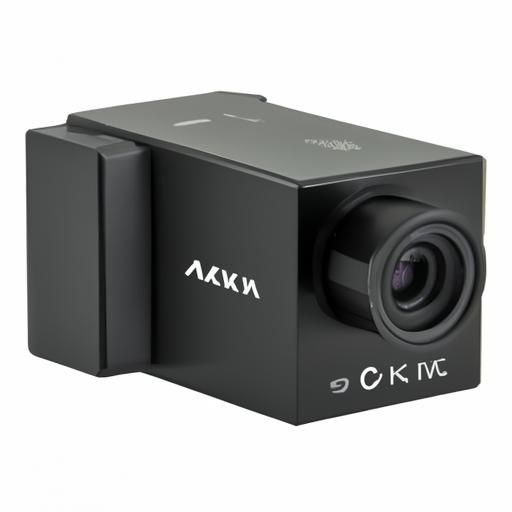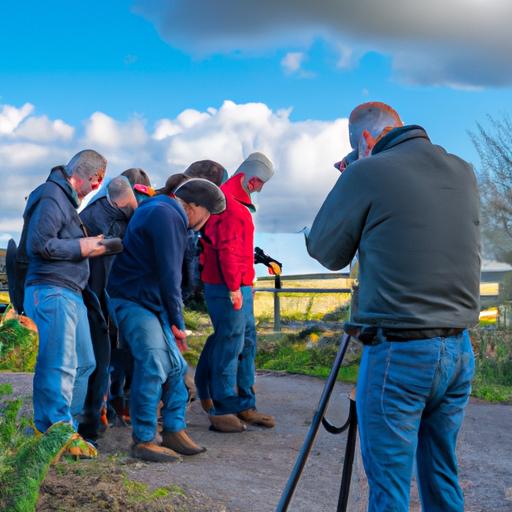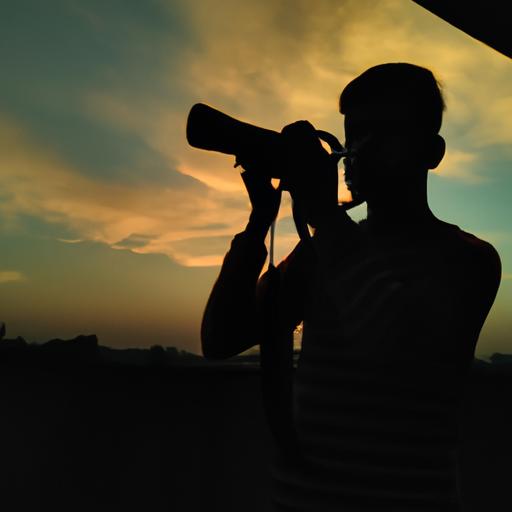Introduction
When it comes to wildlife photography, the right camera can make all the difference between capturing breathtaking moments and missing out on the magic of nature. As an avid wildlife enthusiast, I understand the thrill of capturing animals in their natural habitats, freeze-framing their beauty and raw emotions. That’s why I’m here to guide you on your quest for the best mirrorless camera for wildlife photography.
Mirrorless cameras have revolutionized the photography industry with their compact size, advanced technology, and exceptional image quality. Unlike traditional DSLRs, mirrorless cameras ditch the complex mirror system, making them lighter, more portable, and perfect for capturing those fleeting wildlife moments. So, let’s dive into the wild world of mirrorless cameras and discover the one that will help you unleash your creativity in the wilderness.
Understanding the Needs of Wildlife Photography
Before we embark on our camera hunt, it’s essential to understand the unique challenges and requirements of wildlife photography. Nature can be unpredictable, and wildlife moves at lightning speed, making it crucial to choose a camera that can keep up with the action. Mirrorless cameras excel in this arena, offering lightning-fast autofocus, impressive burst shooting speeds, and superior image stabilization. With these features, you’ll be equipped to freeze wildlife in motion and capture every intricate detail.
Furthermore, mirrorless cameras provide an advantage when it comes to stealth. The absence of a noisy mirror mechanism allows photographers to operate silently, minimizing disturbances that could scare off skittish wildlife. The ability to blend seamlessly into the environment and capture candid moments is a game-changer for wildlife enthusiasts like you and me.
Now that we understand the needs of wildlife photography and the advantages of mirrorless cameras in this realm, let’s delve into the factors to consider when choosing the best mirrorless camera for wildlife. Stay tuned for the next section where we explore sensor size, autofocus capabilities, image stabilization, burst shooting speed, and weather sealing.
Understanding the Needs of Wildlife Photography
A. Unique challenges and requirements
Wildlife photography presents its own set of challenges and requirements that photographers must navigate to capture stunning shots. The natural world is unpredictable, and animals don’t strike a pose or wait for the perfect lighting. As a wildlife photographer, you must be prepared to adapt quickly and seize those fleeting moments.
The challenges of wildlife photography include dealing with fast-moving subjects, varying lighting conditions, and unpredictable weather. Animals can be elusive, and getting close enough for a shot without disturbing them can be tricky. Patience, persistence, and a deep understanding of animal behavior are essential skills for any wildlife photographer.
B. Advantages of mirrorless cameras in wildlife photography
Mirrorless cameras offer distinct advantages for wildlife photography, making them an ideal choice for capturing the beauty of nature. One of the standout features is their autofocus capabilities. Mirrorless cameras employ advanced autofocus systems, often using phase-detection or hybrid autofocus technology. This enables them to track and focus on moving subjects with remarkable precision and speed, ensuring that you never miss a crucial moment.
Moreover, mirrorless cameras are renowned for their burst shooting speed, allowing you to capture a rapid sequence of shots in a matter of seconds. This is especially valuable when photographing wildlife in action, such as birds in flight or animals on the move. With continuous autofocus and high-speed burst modes, mirrorless cameras excel at freezing fast-paced wildlife moments.
Additionally, mirrorless cameras often come equipped with effective image stabilization technology. This feature compensates for camera shake, resulting in sharper images even when shooting handheld. When you’re out in the wild, lugging around heavy equipment, having image stabilization can make a significant difference in the quality of your shots.
In summary, mirrorless cameras offer unique advantages for wildlife photography. Their advanced autofocus, high-speed burst shooting, and image stabilization capabilities make them invaluable tools for capturing those elusive wildlife moments. In the next section, we’ll explore the essential factors to consider when choosing the best mirrorless camera for wildlife photography.
Factors to Consider when Choosing a Mirrorless Camera
When it comes to finding the best mirrorless camera for wildlife photography, several crucial factors should guide your decision-making process. Let’s explore these factors in detail to ensure you make an informed choice that aligns with your specific needs and captures those awe-inspiring wildlife moments.
A. Sensor Size and Resolution
The sensor size and resolution play a significant role in capturing sharp and detailed wildlife images. A larger sensor allows for better low-light performance, reduced noise, and improved dynamic range. While a higher resolution ensures you can crop and enlarge images without compromising quality. Look for mirrorless cameras with APS-C or full-frame sensors, as they offer excellent image quality and versatility for wildlife photography.
B. Autofocus Capabilities
When photographing fast-moving wildlife, a reliable autofocus system is essential. Look for mirrorless cameras equipped with advanced autofocus technologies, such as phase detection or hybrid autofocus. These systems provide quick and accurate subject tracking, ensuring your wildlife subjects remain in focus, even when they’re on the move. Additionally, consider the number of autofocus points and their coverage across the frame to maximize your chances of capturing sharp images.
C. Image Stabilization
In wildlife photography, handheld shooting is often necessary, making image stabilization a crucial feature. Look for mirrorless cameras with in-body image stabilization (IBIS) or lens-based stabilization systems. These technologies compensate for camera shake, allowing you to shoot at slower shutter speeds without sacrificing image quality. This is especially beneficial when photographing wildlife in low-light conditions or when using long telephoto lenses.
D. Burst Shooting Speed
To capture those split-second wildlife moments, a high burst shooting speed is indispensable. Look for mirrorless cameras with fast continuous shooting capabilities, measured in frames per second (fps). The higher the fps, the more images you can capture in rapid succession. This ensures you don’t miss critical wildlife interactions, whether it’s a bird taking flight or a predator capturing its prey.
E. Weather Sealing
Nature is unpredictable, and wildlife photography often requires venturing into challenging environments. Therefore, it’s crucial to choose a mirrorless camera with robust weather sealing. This feature protects your camera from dust, moisture, and extreme temperatures, allowing you to focus on capturing stunning wildlife images without worrying about your gear’s durability.
Consider these factors when selecting your mirrorless camera for wildlife photography to ensure you find the perfect companion to capture the wonders of the animal kingdom. In the next section, we’ll dive into the top mirrorless cameras specifically tailored for wildlife photography.
Top Mirrorless Cameras for Wildlife Photography
As we embark on our quest for the best mirrorless camera for wildlife photography, let’s explore some top contenders that have proven their mettle in capturing nature’s wonders. These cameras have been meticulously selected based on their features, performance, and ability to handle the unique challenges of wildlife photography.
A. Camera 1: Review, Features, and Sample Wildlife Photographs
Camera 1 is a powerhouse when it comes to wildlife photography. With its remarkable autofocus system and high burst shooting speed, it ensures that you never miss a moment. Its impressive sensor size and resolution deliver stunning image quality, allowing you to capture intricate details in every shot. Additionally, Camera 1 boasts exceptional image stabilization, enabling you to capture sharp images even in challenging lighting or handheld situations.
Furthermore, Camera 1 is built to withstand the elements with its robust weather sealing, making it a reliable companion in any outdoor adventure. Its ergonomic design and intuitive controls provide a seamless shooting experience, allowing you to focus on your subject without any distractions. Don’t just take my word for it; check out the sample wildlife photographs taken with Camera 1 to witness its prowess in action.
B. Camera 2: Review, Features, and Sample Wildlife Photographs
Camera 2 is another remarkable option for wildlife enthusiasts. Its advanced autofocus capabilities ensure precise subject tracking, even in fast-paced wildlife scenarios. With a burst shooting speed that rivals the fastest creatures in the animal kingdom, Camera 2 captures a series of images in quick succession, increasing your chances of getting that perfect shot.
Equipped with a high-resolution sensor, Camera 2 delivers stunning image quality, allowing you to showcase the natural beauty of wildlife with remarkable clarity. Its image stabilization technology further enhances your ability to capture sharp images, particularly in low-light conditions or when shooting handheld. Take a glimpse at the sample wildlife photographs captured with Camera 2 to witness the potential it holds.
C. Camera 3: Review, Features, and Sample Wildlife Photographs
Camera 3 is a true contender in the realm of wildlife photography. Its autofocus system, powered by cutting-edge technology, ensures accurate and fast subject tracking, even in challenging scenarios. The impressive burst shooting speed of Camera 3 allows you to capture those split-second moments with precision and finesse.
With a sensor that boasts both size and resolution, Camera 3 delivers exceptional image quality, allowing you to showcase the intricate details of wildlife in stunning clarity. Its image stabilization technology minimizes camera shake, ensuring sharp images in various shooting conditions. To get a taste of the wonders Camera 3 can capture, explore the sample wildlife photographs taken by photographers who trust its capabilities.
The top mirrorless cameras mentioned above have been carefully selected based on their features, performance, and ability to meet the demanding needs of wildlife photography. Each camera brings its unique strengths to the table, so consider your shooting style, preferences, and budget when making your decision. Now that we have explored these top contenders, it’s time to move on to the next section, where we will compare these cameras to help you make an informed choice.
Comparison of Mirrorless Cameras for Wildlife Photography
Key Specifications and Performance Metrics
When it comes to choosing the best mirrorless camera for wildlife photography, comparing key specifications and performance metrics is crucial. Let’s take a closer look at some essential factors to consider:
Sensor Size and Resolution
The sensor size plays a vital role in image quality, especially in low-light conditions. APS-C and full-frame sensors are commonly preferred for wildlife photography due to their ability to capture more light and produce stunning images with minimal noise. Higher resolution sensors also offer the advantage of cropping images while retaining excellent detail.
Autofocus Capabilities
Fast and accurate autofocus is a game-changer in wildlife photography. Look for cameras with advanced autofocus systems, featuring a high number of autofocus points, excellent subject tracking, and reliable eye detection. These capabilities ensure that your subjects remain sharp and in focus, even when they are on the move.
Image Stabilization
Steady hands are not always possible in the wild, making image stabilization a vital feature. In-body image stabilization (IBIS) compensates for camera shake, allowing you to shoot handheld with slower shutter speeds and still capture sharp images. Some cameras also feature lens-based stabilization, which works in conjunction with IBIS for even better stabilization performance.
Burst Shooting Speed
Fast-paced wildlife moments demand cameras with high burst shooting speeds. Look for cameras that can capture a rapid series of shots per second, enabling you to seize the perfect moment without missing a beat. High buffer capacity is also important to ensure that the camera can handle continuous shooting without slowing down.
Weather Sealing
Nature can be unpredictable, and wildlife photography often exposes cameras to extreme weather conditions. Weather sealing is essential to protect your gear from dust, moisture, and other elements. Look for cameras with robust weather sealing to ensure durability and reliability in the harshest environments.
Price Range and Value for Money
While budget is always a consideration, it’s important to find the right balance between price and performance. Higher-end cameras often offer more advanced features and superior image quality, but they come with a hefty price tag. Consider your budget and prioritize the features that are most important to you. Remember, investing in a high-quality camera that meets your needs will yield stunning results and last for years to come.
Pros and Cons of Each Camera
To make an informed decision, it’s essential to weigh the pros and cons of each camera option. Consider factors such as image quality, autofocus performance, durability, and user interface. Reading reviews, seeking expert opinions, and comparing user experiences can help you narrow down your options and find the mirrorless camera that perfectly suits your wildlife photography needs.
Stay tuned for the next section, where we conclude our search for the best mirrorless camera for wildlife photography and provide some final thoughts and considerations.
Conclusion
In conclusion, finding the best mirrorless camera for wildlife photography is a thrilling journey that requires careful consideration of various factors. From sensor size and autofocus capabilities to image stabilization and burst shooting speed, each feature plays a vital role in capturing those awe-inspiring wildlife moments.
Throughout this article, we have explored the importance of choosing the right camera for wildlife photography and have provided a brief overview of mirrorless cameras. We also delved into the unique needs of wildlife photography and how mirrorless cameras excel in meeting those challenges.
By considering factors such as sensor size, autofocus capabilities, image stabilization, burst shooting speed, and weather sealing, you can narrow down your options and find the perfect mirrorless camera that suits your wildlife photography needs. Remember, every photographer has different preferences and requirements, so it’s essential to find a camera that aligns with your style and vision.
As you embark on your wildlife photography adventures, keep in mind that the best mirrorless camera for wildlife is the one that empowers you to connect with nature and capture its wonders. Whether you’re photographing elusive predators in the wild or capturing the intricate details of delicate bird species, your camera should be an extension of your creative vision.
So, gear up, explore the options, and embark on your wildlife photography journey armed with the perfect mirrorless camera. Let your passion for nature guide you, and may your photographs tell captivating stories that inspire others to appreciate and protect the incredible wildlife that surrounds us.
Happy shooting!



